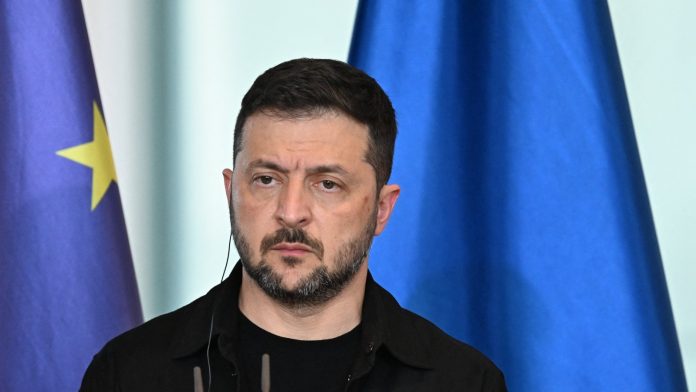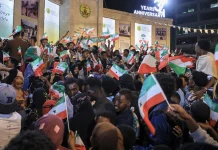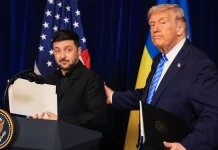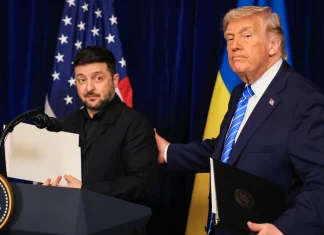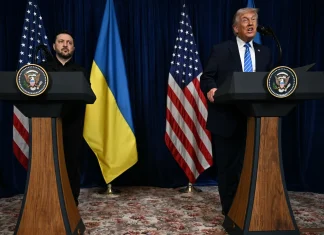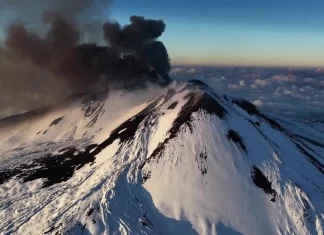A New Front Opens: The Quiet Storm in Ukraine’s Dnipropetrovsk Region
For over a year, the war in Ukraine has carved grim battle lines across the eastern and southern landscapes, painting a canvas of devastation and relentless conflict. Yet, amid the chaos and calamity, certain regions remained, at least until recently, islands of relative calm. Dnipropetrovsk was one such place—a central administrative area largely spared from the ferocity experienced in Donetsk, Luhansk, or Kherson.
But on an otherwise undramatic day in late August, Kyiv’s acknowledgment that Russian forces had crossed into Dnipropetrovsk marked a stark shift. It was, as Viktor Tregubov, spokesperson for the Dnipro Operational Strategic Group, put it simply, “Yes, they have entered, and fighting is ongoing as of now.”
Behind this understated confirmation lies a sobering reality. The invaders—Russia’s military—have slowly pushed past historic boundaries, inching their way into regions previously thought to be protected by geography, strategy, or luck. Moscow had long claimed small victories there in whispers and official announcements but stopped short of a formal territorial claim—until now. This creeping incursion signals a broadening war front, an expansion of conflict zones where civilians once felt safe.
The Quiet Invasion and the Battle for Villages
The villages of Zaporizke and Novogeorgiivka, tiny specks on the map, have turned into symbols of the ongoing struggle. While Ukraine’s General Staff firmly rejects full Russian control over these settlements, observers aligned with Kyiv, such as the battlefield monitor DeepState, say otherwise. According to their social media updates, Russian forces have firmly “occupied” these hamlets and are now “consolidating positions, accumulating infantry for further advance.”
This advance is no easy feat. The advance chips away at a landscape already ravaged by artillery, airstrikes, and urban warfare. The fields are muddy with battle scars, buildings reduced to skeletons, and the streets eerily empty—a testament to the terrible price paid by residents who have fled, fled, or perished.
Locals who dared to stay describe the relentless pressure. “The nights are the worst,” said Oleksandr, a farmer from near Zaporizke. “We hear the distant rumble of tanks and then the distant sounds of explosions. It’s like the earth itself is moaning.” His words capture a reality shared by many—a war that is both physically destructive and deeply psychic, violating homes and the souls of those ensnared.
Geography, Politics, and the Broader War
Dnipropetrovsk is not a contested territory like Donetsk or Crimea, where Moscow has unilaterally declared annexations. This makes the incursion even more significant. It signals Russia’s intention not merely to hold known war zones but to stretch its fingers into the Ukrainian heartland—an ominous demonstration of power, but also perhaps desperation.
Meanwhile, on the diplomatic front, the war trudges in a quagmire. The early glow of hope—when Donald Trump met with both Vladimir Putin and Volodymyr Zelensky, sparking whispers of peace—is dimming fast. Moscow’s blanket refusal for direct talks and Putin’s demands for Ukraine to withdraw from occupied areas as a precondition for peace have shut doors violently.
Kyiv, for its part, rejects such ultimatums as non-starters. “We defend every inch of our land,” Zelensky declared passionately in a recent address. “Negotiations are not about surrender but about securing peace.”
Hope on the Horizon: Avenues for Diplomacy
Yet even in the shadow of expanding conflict, glimmers of diplomatic possibilities seep through. President Zelensky has suggested that Turkey, Gulf States, or European nations might serve as neutral ground to host talks with Putin. Speaking to the world in a nightly video address, Zelensky emphasized coordination with allies, particularly the United States, as crucial to pressing Russia into genuine dialogue.
“This week, contacts with Turkey, the Gulf States, and European countries could pave the way for talks,” Zelensky said, his tone hopeful yet cautious. His chief of staff’s recent travels to Qatar to meet their defense minister underscore the discreet, urgent diplomacy unfolding behind the scenes.
Yet, Russian Foreign Minister Sergei Lavrov remains noncommittal: “No agenda has been prepared for such a meeting.”
The diplomatic seesaw raises a compelling question: can diplomacy emerge from a battlefield steeped in blood and political theater? Can global powers, caught in their own rivalries and interests, find unity to press for peace? Or will this war continue to spiral, consuming more lives, more land, more hope?
Life Under Siege: The Human Toll and Shifting Borders
While generals and politicians maneuver, the human element remains stark. Ukrainian men between 18 and 22 are uniquely affected by these changes. Previously barred from leaving the country due to martial law—aimed at bolstering defense—new decrees now permit their cross-border mobility, signaling a subtle shift in Kyiv’s strategy and perhaps an acknowledgment of evolving war dynamics.
Prime Minister Yulia Svyrydenko explained this nuanced decision: “We want Ukrainians to maintain a maximum of links with Ukraine, even for those outside the country.” It’s a reminder that the war touches not only those on the frontlines but also families torn between homeland and diaspora, obligation and survival.
The Cultural Heartbeat Amid Conflict
In towns like Dnipro, the heartbeat of Ukrainian culture persists. Markets bustle with fresh produce, musicians play in underground cafés, and artists paint murals of resilience on bombed buildings, transforming scars into stories. One such artist, Kateryna, shared, “We paint to remember. Every stroke says: we are still here, still dreaming, still fighting.”
Her words echo a larger truth: beyond territorial gains and losses, wars are reckonings of identity and spirit. For Ukrainians, whose rich history intertwines folklore, orthodox traditions, and fierce independence, each battlefront is also a cultural frontline.
Looking Beyond the Horizon: What Can the World Learn?
As we watch the maps redraw themselves in real-time, it’s natural to wonder about the broader lessons. What does the conflict in Dnipropetrovsk tell us about modern warfare? About the resilience of nations? About the prices ordinary people pay in grand geopolitical games?
For a global audience, the war in Ukraine is not just a distant headline. It’s a poignant reminder of fragility—how peace can disappear, how borders shift, how the echoes of history shape the present. It also challenges us to ask: in a world of interconnected economies, fragile alliances, and shared humanity, how do we balance power with diplomacy, strategy with compassion?
One thing is certain: the quiet fields of Dnipropetrovsk, now scarred by tanks and tremors, are unlikely to remain quiet for long. As the world watches, the fate of this region—and perhaps the wider conflict—will depend not only on soldiers and statesmen but on the will of people who refuse to surrender their land or their hope.
So, what is your take? How should the international community respond when war crosses into once-peaceful hearts of countries? Is diplomacy enough, or does history teach us that peace requires far more—perhaps even courage from ordinary people who dream beyond the guns?
Whether near or far, the unfolding drama in Dnipropetrovsk invites all of us to listen—to stories of resilience, loss, and the profound human desire to rebuild. To witness not just a war, but life persist against the odds.


